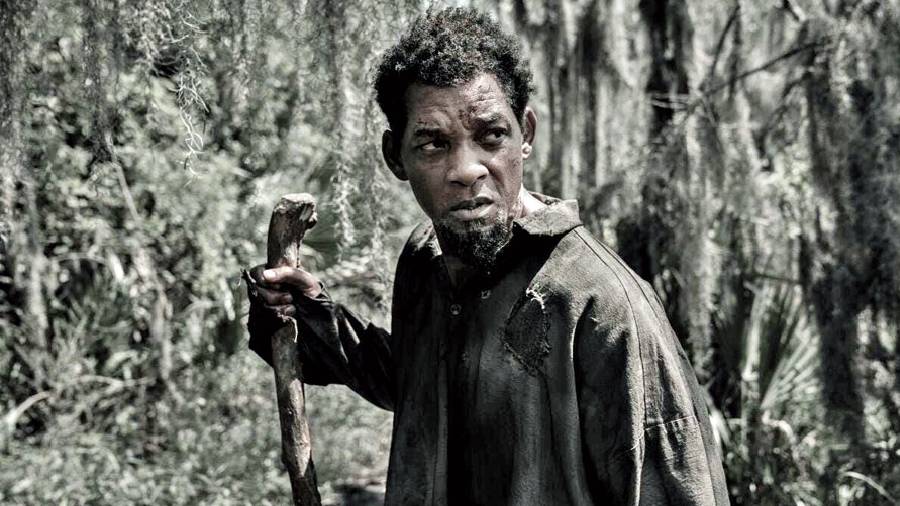By the time Emancipation ends, Will Smith as Peter — or ‘Whipped Peter’ — takes quite a few on the chin, nose, cheeks and the back to come across as an actor who channels many of the attributes of his screen character, like courageousness and resourcefulness. Yet, that doesn’t prevent Emancipation (streaming on Apple TV+) from being just one of the many courageous tales of the American Civil War era.
In fact, Antoine Fuqua, the film’s director, ends up creating a seemingly endless battle set that Peter has to escape like an action hero in a video game. He makes viewers watch Peter suffer over more than two hours before giving him a brief respite minutes before the end credits roll.
The director may come across somewhat rudderless when it comes to what he wants viewers to take away from the film but Smith does a wonderful job depicting a slave whose photograph appeared in Harper’s Weekly in 1863.
This was when public support for the Civil War in the North was shaky. The country had already been at war for two years and Peter is taken away from a Louisiana plantation where he works with his wife, Dodienne (Charmaine Bingwa), and looks after his children. He gets enlisted by the rebels. The separation from his family first breaks him but then he literally rises from the ashes at a camp that’s building railroad tracks for the Confederacy. He is whipped, tortured and is chained near a pack of killer dogs. The choice is clear — die at the camp or get killed while escaping. He engineers an escape through the swamps to Baton Rouge soon after overhearing about Abraham Lincoln’s Emancipation Proclamation. The only chance he and three other slaves from the camp has is to reach the Union forces somehow.
Peter’s fate is no secret. It is only after reaching the other side that the escaped enslaved man gets photographed, revealing a treelike network of keloid scars on his back. The image was widely circulated, shocking citizens. The photograph became sort of a tool for abolitionists. When Smith’s Peter sits down for the photographers, his calmness is haunting; the image of the scars wake up the viewer as much as the brutal whipping that’s heard throughout the film.
The duration between escaping a camp and donning a Union uniform forms the bulk of the film. This is when the chase takes place, this is when Emancipation becomes a conventional film. All Peter has to do is outsmart a bunch of men with guns, and a few crocodiles, brave the forces of nature, stay awake at night and stay away from snakes. Peter sort of becomes an action hero in tattered clothing. The action plays out through desaturated frames.
Misery hides in every corner and Peter has a triumphant moment when he’s discovered by the all-Black Louisiana Native Guards. In a film where nuance is rare, Smith brings a high degree of intensity to his role, something that’s way more than just throwing a piercing gaze. Smith gives his character depth.
Credit also goes to the cinematographer Robert Richardson who makes night scenes burn like flame while daytime, the swamp flows like a nightmare. The images are stunning, meant to be seen on the big screen.
That doesn’t stop Emancipation from becoming a chase movie. Films like 12 Years a Slave and the miniseries The Underground Railroad offer a savage picture of slavery. But by making Peter dispatch a crocodile the film enters a gimmicky zone. In fact, the chase scenes can be put in any order without messing up the plot.
Ultimately, Smith’s fine acting is reduced to a side dish in a film where the main course is a straightforward chase thriller. When the chase ends, it becomes a war film.
Yet, Smith ensures that at least Peter’s legacy remains intact. He portrays the character with conviction, ensuring the movie doesn’t become a slap on the face. Too bad Fuqua gets caught up with how many times Peter looks down the barrel of guns or up the nostril of crocodiles.
If we can forget for a couple of hours all that had happened at the Academy Awards a few months ago, two things will remain with the viewer — Smith’s dedication to his craft and the little girl in the film who shouts “Runner, runner”, helping the bad guy (Ben Foster) train his gun in the direction of Peter.










